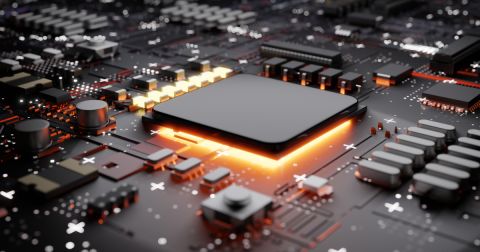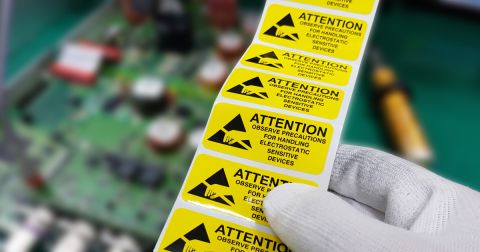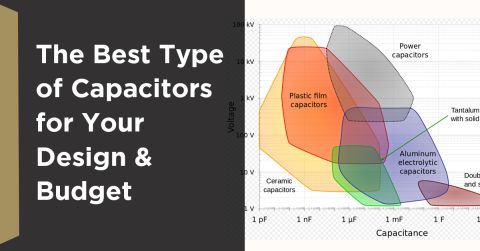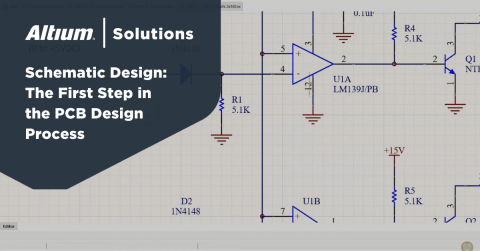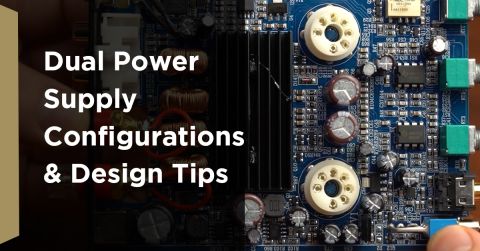Internal Versus External Surge Protectors: What’s Best for Total PCB Protection

When we look at measures to guard against power surges and transients, TVS diodes get most of the attention. There is nothing wrong with TVS diodes as they are an excellent low-cost, low-space component for protecting equipment from surges and ESD events. However, those diodes are not the only option for dealing with power surges. Instead, there are components that can be used on and off the PCB as part of a comprehensive strategy for withstanding power surges and transients.
What Type of Surge Protection is Needed?
Surge protection is needed when there is a danger of a power surge occuring on the main power input coming into a device. There are requirements in EMC regulations and industry standards on specific products, which then demand placement of surge protection components and circuitry. The level of surge protection depends on the expected power surge level and current inrush that would be experienced during the event. If designing to a specific standard, the minimum value outlined in the standard should guide the design and may dictate component selection.
Surge protection can further be found internal to the PCB as a set of components, or external to the board as a pre-packaged module. The latter is more common for devices that to connect directly to mains (no intervening power supply) at very high voltages. Those components tend to simply be too large to fit onto a PCB. On-board components should also be used in targeted locations, even if an external component is required for the system to function. Together, they allow a system to withstand transient events with different magnitudes that may be associated with strong power surges.
Internal (On-Board) Surge Protection
Inrush Current Limiting Resistor - Power surges, and switching on power from AC mains in general, can allow inrush currents that can damage devices during the initial power-up phase. Inrush currents can be reduced and dampened with a fixed resistor. To size a current limiting resistor, use the maximum current you can expect at inrush and the peak input voltage to calculate the resistor's power rating. The resistance is then calculated using those values in Ohm's law. This will allow the inrush limiter to set the current to the required level without burning up during the inrush phase.
Varistor - Varistors are nonlinear voltage-controlled resistors. In other words, they are components with DC resistance that is a function of the input voltage they experience. These components operate somewhat like diodes as they initially have high resistance, but above some working voltage threshold their resistance can decrease. This allows them to reduce the magnitude of an overvoltage event by damping the power surge transient on its rising edge. These components are built on popular semiconductor materials, or they may be metal oxide varistors (MOVs).

Gas Discharge Tube - These components are placed across power inputs. They can provide very high transient voltage protection when placed upstream from a bidirectional/unidirectional TVS diodes on component pins. In this configuration, a gas discharge tube will target the higher voltage transients and power surges, while slower/lower voltage portion of a transient will be handled with the TVS diodes. Smaller gas discharge tubes are the typical component used in surge protectors for AC power strips and power supplies.
NTC Thermistors - A negative temperature coefficient (NTC) thermistor can be used as a sensor or as a surge protector. The component experienes a reduction in resistance as its temperature increases. This means that, as a power surge occurs and current inrush begins, some energy is initially dropped across the thermistor and is converted to heat. The thermistor's resistance then decreases and allows the rest of the energy to pass downstream to another surge protection component, typically TVS diodes. These will sometimes be used in series with a gas discharge tube.

TVS Diode - Last but not least, I've included TVS diodes. These are the go-to sources for power surge protection on both low-voltage buses and data lines. On low-voltage buses, such as the +5 V line coming in from a USB connector, small TVS diodes can be selected to provide very fine overvoltage protection that can deal with strong surges and fast transients. To learn more about TVS diode usage, read this article.
PCB-Mount Circuit Breaker - Finally, there are miniature circuit breakers that can be PCB-mounted, typically as through-hole components. These breakers can have high current ratings (tens of Amps); they tend to have high profile and should be edge mounted for access to the breaker switch. These devices function in the same way as their enclosure/cabinet mounted counterparts.
External Surge Protection
External devices that can be used for surge protection include modules that perform the above functions, as well as circuit breakers. These components can be enclosure-mounted, or mounted in a rack or cabinet, simply because they are too large to mount directly to a PCB. These components can then connect to large screw terminals on the PCB through low-gauge wiring, depending on the currents involved. These components will typically be used with AC line voltages and/or high DC voltages, such as the Allen-Bradley surge arrester shown below.

Is it Worth Paying More For an External Surge Arrester?
The answer to this question depends on where a device is being deployed. These arresters will most likely be used in larger systems like you find in industrial environments, marine (large vessels), and even in aircraft. For the most conservative deployments and systems, which must have highest possible uptime and withstand very high surges, external arresters are worth the extra component cost.
Even if you use an external surge arrestor, on-board components should also be included. The total costs involved in fitting these components in a design is minimal, even if all the above precautions are taken. All of these components taken together protect against a range of faults, surges, and transients throughout a system, not just a power surge at the mains connection or the power supply input.
When you're ready to create your surge protection circuits and a BOM for your system, make sure you use the complete set of PCB design tools in Altium Designer®. Altium Designer is the industry’s leading CAD platform that provides circuit design, simulation, and sourcing tools inside the application. When you’ve finished your design, and you want to release files to your manufacturer, the Altium 365™ platform makes it easy to collaborate and share your projects.
We have only scratched the surface of what’s possible with Altium Designer on Altium 365. Start your free trial of Altium Designer + Altium 365 today.


